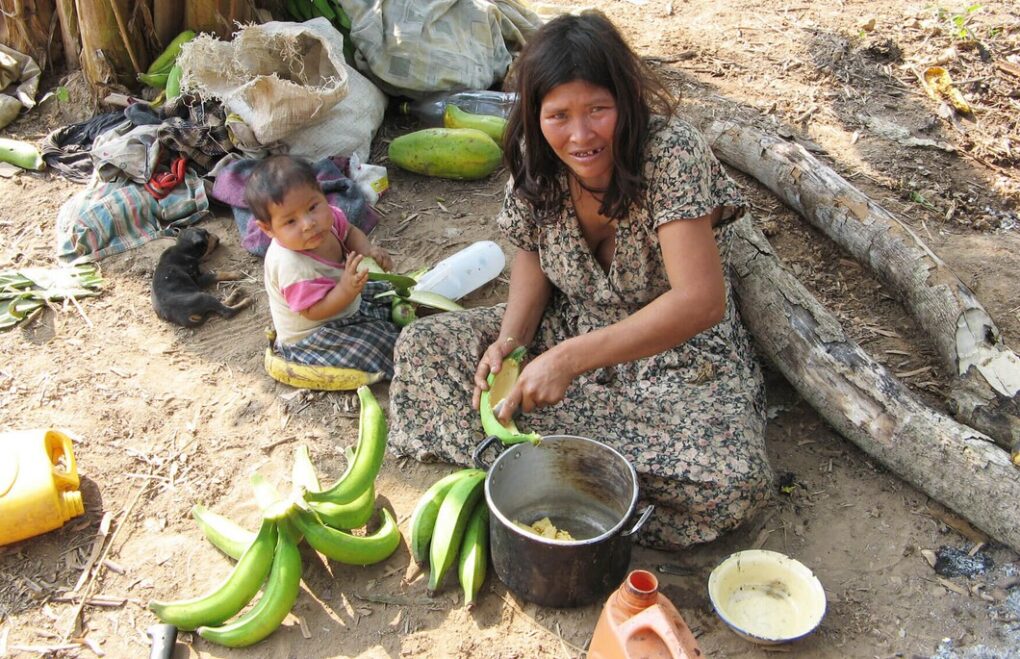Lifestyle of Indigenous Amazonian Tribes May Hold Secret to Peak Brain Health
Who inspires you to live a healthier life? While many people follow the lifestyles of the rich and famous, scientists at the University of Southern California suggest looking to the indigenous communities of the Bolivian Amazon. The Tsimané and Mosetén tribes use optimal diet and exercise practices that lead to healthy brain aging and a lower risk of disease.
Industrialization has made it so humans have much more access to food, less need for hard physical labor, and better access to healthcare than ever before. But with that, we’ve gotten used to eating more and moving our bodies less. Obesity and living a sedentary life is linked to quicker cognitive decline and smaller brain volumes.
“The lives of our pre-industrial ancestors were punctured by limited food availability,” says study co-author Andrei Irimia, an assistant professor of gerontology, biomedical engineering, quantitative/computational biology and neuroscience at USC’s Leonard Davis School of Gerontology, in a statement.. “Humans historically spent a lot of time exercising out of necessity to find food, and their brain aging profiles reflected this lifestyle.”
 BRAIN: 51 Powerful Ways to Improve Brain Power, Enhance Memory, Intelligence and Concentration NATURALLY! (MEMORY, Memory Improvement, Learning, Brain Training)
BRAIN: 51 Powerful Ways to Improve Brain Power, Enhance Memory, Intelligence and Concentration NATURALLY! (MEMORY, Memory Improvement, Learning, Brain Training)
To explore this, the team from USC recruited 1,165 Tsimané and Mosetén adults between the ages of 40 and 94, and transported them to the nearest hospital capable of performing CT scans to measure brain volume. Additionally, they measured body mass index, blood pressure, total cholesterol and other health status markers.
Results show that the tribes experience less brain wasting and improved heart health compared to people in Western nations like the U.S. and Europe. The researchers also point to differences between the Indigenous societies as well. The Mosetén are a “sister” population to the Tsimané, referring to how similar they are regarding language and history. But a key difference is that they are more exposed to modern technology, medicine, infrastructure and education.
“The Mosetén serve as an important intermediary population that allows us to compare a wide spectrum of lifestyle and health care factors. This is more advantageous than a straight comparison between the Tsimané and the industrialized world,” explains Irimia.
So while both tribes were better off than modern populations in Europe and the U.S., the Mosetén didn’t exhibit results as strong as the Tsimané. But there was also something surprising observed in the Tsimané. Elevated BMI and levels of “bad cholesterol” were actually linked to larger brain volumes by age. At the same time, this could be due to the people having more muscle than those in modern nations with the similar BMIs.
The authors agree that the study highlights the constant battle in today’s high-exposure society to go back to evolutionary roots.
“During our evolutionary past, more food and less calories spent in getting it resulted in improved health, well-being and ultimately higher reproductive success or Darwinian fitness,” notes Hillard Kaplan, a professor of health economics and anthropology at Chapman University who has studied the Tsimané for nearly two decades. “This evolutionary history selected for psychological and physiological traits that made us desirous of extra food and less physical work, and with industrialization, those traits lead us to overshoot the mark.”
Their main takeaway is that a “sweet spot” between not eating too little or too much, and exercising consistently, is necessary.
The findings are published in the journal Proceedings of the National Academy of Sciences.
Source: Study Finds
Shyla Cadogan is a recent graduate from the University of Maryland, College Park with a Bachelor’s of Science in Nutrition and Food Science. She is on her way to becoming a Registered Dietitian, with next steps being completion of a dietetic internship at the University of Maryland Medical Center where she currently is gaining experience with various populations and areas of medical nutrition such as Pediatrics, Oncology, GI surgery, and liver and renal transplant. Shyla also has extensive research experience in food composition analysis and food resource management.
Image: The Tsimané have some of the lowest rates of heart and brain disease in the world. (Courtesy of the Tsimane Health and Life History Project Team.)


 By
By 
